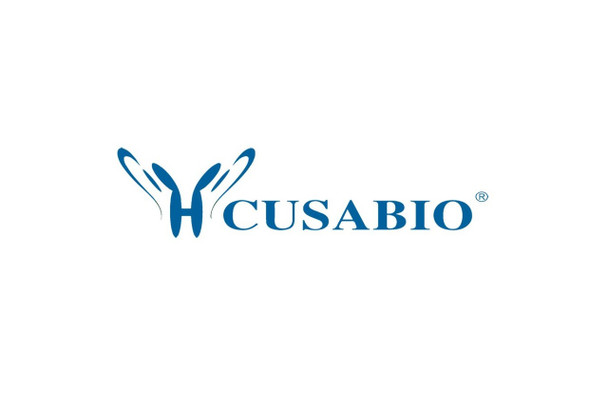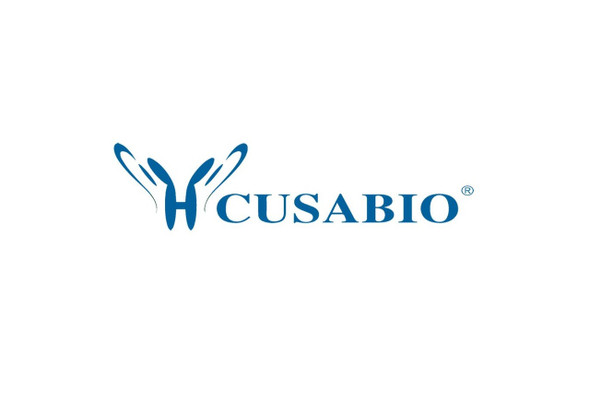Cusabio Human Recombinants
Recombinant Human Interferon-induced helicase C domain-containing protein 1 (IFIH1), partial | CSB-EP880143HU
- SKU:
- CSB-EP880143HU
- Availability:
- 3 - 7 Working Days
Description
Recombinant Human Interferon-induced helicase C domain-containing protein 1 (IFIH1), partial | CSB-EP880143HU | Cusabio
Alternative Name(s): Clinically amyopathic dermatomyositis autoantigen 140KDA
Gene Names: IFIH1
Research Areas: Immunology
Organism: Homo sapiens (Human)
AA Sequence: KLTKLRNTIMEQYTRTEESARGIIFTKTRQSAYALSQWITENEKFAEVGVKAHHLIGAGHSSEFKPMTQNEQKEVISKFRTGKINLLIATTVAEEGLDIKECNIVIRYGLVTNEIAMVQARGRARADESTYVLVAHSGSGVIEHETVNDFREKMMYKAIHCVQNMKPEEYAHKILELQMQSIMEKKMKTKRNIAKHYKNNPSLITFLCKNCSVLACSGEDIHVIEKMHHVNMTPEFKELYIVRENKALQKKCADYQINGEIICKCGQAWGTMMVHKGLDLPCLKIRNFVVVFKNNSTKKQYKKWVELPITFPNLDYSECCLFSDED
Source: E.coli
Tag Info: N-terminal 6xHis-tagged
Expression Region: 700-1025aa
Sequence Info: Partial
MW: 41.5 kDa
Purity: Greater than 90% as determined by SDS-PAGE.
Relevance: Innate immune receptor which acts as a cytoplasmic sensor of viral nucleic acids and plays a major role in sensing viral infection and in the activation of a cascade of antiviral responses including the induction of type I interferons and proinflammatory cytokines. Its ligands include mRNA lacking 2'-O-methylation at their 5' cap and long-dsRNA (>1 kb in length). Upon ligand binding it associates with mitochondria antiviral signaling protein (MAVS/IPS1) which activates the IKK-related kinases: TBK1 and IKBKE which phosphorylate interferon regulatory factors: IRF3 and IRF7 which in turn activate transcription of antiviral immunological genes, including interferons (IFNs); IFN-alpha and IFN-beta. Responsible for detecting the Picornaviridae family members such as encephalomyocarditis virus (EMCV) and mengo encephalomyocarditis virus (ENMG). Can also detect other viruses such as dengue virus (DENV), west Nile virus (WNV), and reovirus. Also involved in antiviral signaling in response to viruses containing a dsDNA genome, such as vaccinia virus. Plays an important role in amplifying innate immune signaling through recognition of RNA metabolites that are produced during virus infection by ribonuclease L (RNase L). May play an important role in enhancing natural killer cell function and may be involved in growth inhibition and apoptosis in several tumor cell lines.
Reference: "mda-5: an interferon-inducible putative RNA helicase with double-stranded RNA-dependent ATPase activity and melanoma growth-suppressive properties." Kang D.-C., Gopalkrishnan R.V., Wu Q., Jankowsky E., Pyle A.M., Fisher P.B. Proc. Natl. Acad. Sci. U.S.A. 99:637-642(2002)
Storage: The shelf life is related to many factors, storage state, buffer ingredients, storage temperature and the stability of the protein itself. Generally, the shelf life of liquid form is 6 months at -20?/-80?. The shelf life of lyophilized form is 12 months at -20?/-80?.
Notes: Repeated freezing and thawing is not recommended. Store working aliquots at 4? for up to one week.
Function: Innate immune receptor which acts as a cytoplasmic sensor of viral nucleic acids and plays a major role in sensing viral infection and in the activation of a cascade of antiviral responses including the induction of type I interferons and proinflammatory cytokines. Its ligands include mRNA lacking 2'-O-methylation at their 5' cap and long-dsRNA (>1 kb in length). Upon ligand binding it associates with mitochondria antiviral signaling protein (MAVS/IPS1) which activates the IKK-related kinases
Involvement in disease: Diabetes mellitus, insulin-dependent, 19 (IDDM19); Aicardi-Goutieres syndrome 7 (AGS7); Singleton-Merten syndrome 1 (SGMRT1)
Subcellular Location: Cytoplasm, Nucleus
Protein Families: Helicase family, RLR subfamily
Tissue Specificity: Widely expressed, at a low level. Expression is detected at slightly highest levels in placenta, pancreas and spleen and at barely levels in detectable brain, testis and lung.
Paythway:
Form: Liquid or Lyophilized powder
Buffer: If the delivery form is liquid, the default storage buffer is Tris/PBS-based buffer, 5%-50% glycerol. If the delivery form is lyophilized powder, the buffer before lyophilization is Tris/PBS-based buffer, 6% Trehalose, pH 8.0.
Reconstitution: We recommend that this vial be briefly centrifuged prior to opening to bring the contents to the bottom. Please reconstitute protein in deionized sterile water to a concentration of 0.1-1.0 mg/mL.We recommend to add 5-50% of glycerol (final concentration) and aliquot for long-term storage at -20?/-80?. Our default final concentration of glycerol is 50%. Customers could use it as reference.
Uniprot ID: Q9BYX4
HGNC Database Link: HGNC
UniGene Database Link: UniGene
KEGG Database Link: KEGG
STRING Database Link: STRING
OMIM Database Link: OMIM









